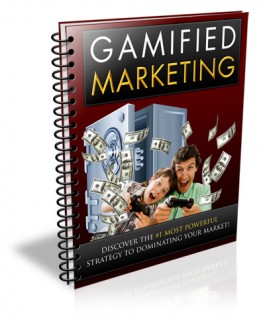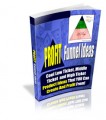 License Type: Private Label Rights
License Type: Private Label Rights  File Size: 804 KB
File Size: 804 KB File Type: ZIP
File Type: ZIP
 SKU: 51798
SKU: 51798  Shipping: Online Download
Shipping: Online Download
Ebook Sample Content Preview:
The social web has elevated ‘social gaming’ to a whole new level. These days, you can instantly maximize your business exposure just by providing ‘customer rewards’ such as loyalty points, badges or even prizes just for participating in on-site activities or being a part of your community.
Here are just a few ways that you can begin to implement gamification into your marketing campaigns:
Loyalty Programs
Loyalty programs have been in existence for years but with the popularity of social web platforms, it’s never been easier to implement. With loyalty programs, the idea is to encourage a “build-up”.
Loyalty programs are successful because they are based around a long-term strategy where customers save up points or work towards higher program levels where the rewards continue to increase in overall value.
Incentive Offers Through Response Levels
People enjoy earning things and when they feel as though they have had to accomplish something in order to receive the reward, it’s also more valuable to them than if it were merely given away.
Keep this in mind when creating incentive-based offers and always match the offer with the level of engagement or action-based response.
For example, completing a 2-minute customer survey might reward them with a 5% discount, whereas taking advantage of a product special may reward them with an additional 10%.
Badges
Badge based programs are one of the easiest to set up and can be offered through your website, blog or on your Facebook page.
While badge programs are simple in both concept and execution, they are a great way to test the waters, measure your customers’ overall interest, and evaluate response rates before moving towards additional gamification integration.
For example, if you are a smaller start-up business, creating a badge based reward program is not only a fast and easy way to build brand awareness but it’s also affordable and requires no more than a bit of programming.
You can launch your badge program from your Facebook business page and build up your following all at the same time! The correct tools are what can make or break a solid strategy and with gamification, maintaining the connection, and providing your customer with a good experience is important so learning as much as you can from the very start makes excellent sense.
Examples of Effective Gamified Marketing
In order to help you build and execute a gamified based marketing campaign for your business; here are just a few examples of successful platforms based on gamification.
Facebook’s Gaming Center
Even small applications and beginner games have exploded within the Facebook community, giving new companies fresh exposure while building incredible brand power. One example of the popularity of social gaming is Farmville, which brought in millions of users upon launch.
Foursquare
Foursquare, is a location-based social networking website for mobile devices, such as smartphones.
Users "check in" at venues using a mobile website, text messaging, or a device-specific application by selecting from a list of venues which the application locates nearby. Location is based on GPS hardware in the mobile device or network location provided by the application. Each checkin awards the user points and sometimes "badges".
Groupon
Groupon is based on game mechanics and has been featured by Forbes as the fastest-growing company ever.
Check out the different ways that they have exploited the power of ‘gamification’ to keep users active on their website (progress bar that shows how many people have purchased and how many more are needed before the deal is activated, etc). True gamification at its best!
Take a moment to analyze each of these examples and determine how you can build a similar platform for your next marketing campaign. As you can see from the examples above, many of the leading gamification strategies involves “content bits”.
Rather than providing too much information as once, you simply give the consumer only what they need to proceed to the next stage (level, group, etc).
Another important component of a successful gamification strategy is to provide rewards. This may be in the form of additional levels (in the traditional game setting), being recognized on the website (think leaderboards, etc), exclusive discounts and coupon offers, or when implementing loyalty programs or badges, it may unlock other options, deals or specials, enhancing a consumers’ experience and keeping them coming back for more.
Rewarding social behavior whether it’s providing a customer with points that can be used towards future purchases or giving customer’s “bonus items” when a certain sale amount is met, you will be able to continue to influence responses, increasing sales and overall revenue while continuing to build relationships with your customer base.
It’s also important to keep in mind that gamification is a long-term strategy and while it takes time to set up and execute, it holds the power to literally transform your business!
- File Size:804 KB
- License: Private Label Rights
- Category:Ebooks
- Tags:2014 Ebooks Private Label Rights








